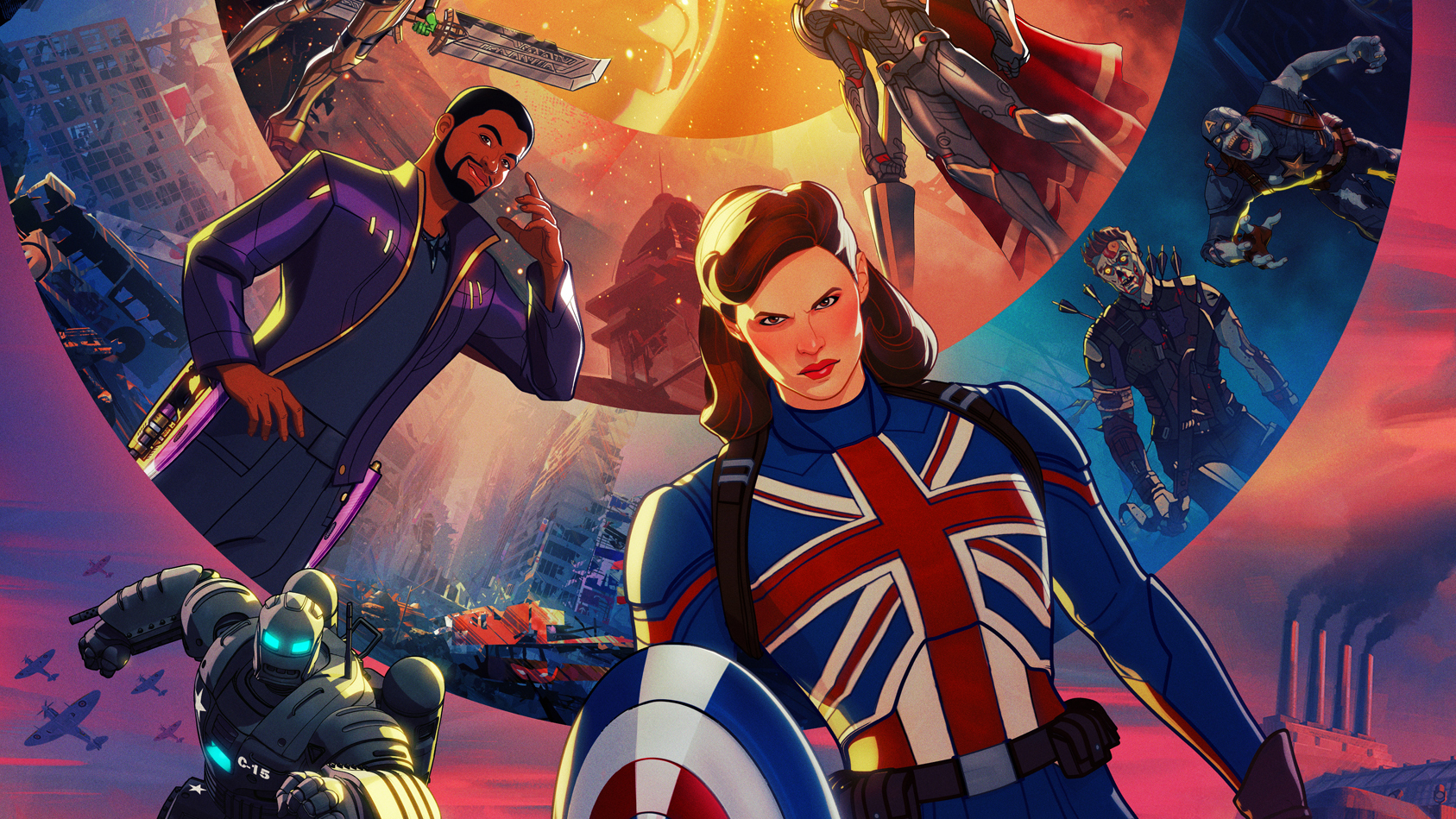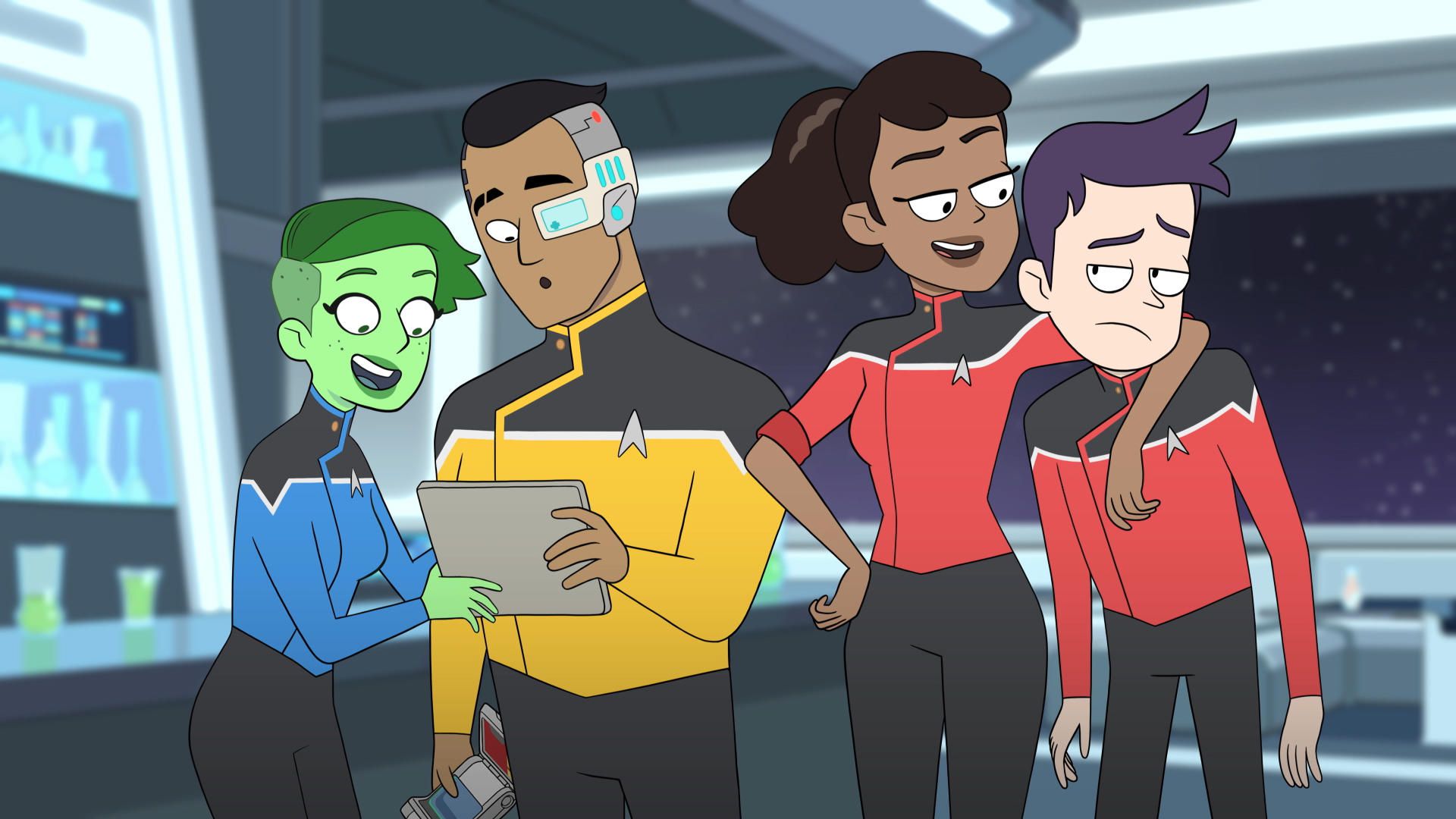For Marvel, Star Wars and Star Trek, animation is now the boldest new frontier
Spin-off cartoons have come a long way since Droids and Free Willy...

Animated spin-offs from blockbuster movies are nothing new. Back in the ’80s and ’90s, heroes from Star Wars, Bill & Ted, Back to the Future, The Mask, Ace Ventura, the Ghostbusters and even Free Willy were routinely transformed into cartoon form.
They were primarily made for kids watching TV on Saturday mornings, and often bore just a passing resemblance to the source material. The original film actors rarely showed up to reprise their roles – notable exceptions were Anthony Daniels as C-3PO in Droids, and Keanu Reeves and Alex Winter in Bill & Ted’s Excellent Adventures – while numerous liberties were taken with character designs and stories. Suddenly nerdy spook-hunter Egon Spengler was given an incongruous bleach-blond look in The Real Ghostbusters. The cartoon version of Free Willy saw the kid developing the unlikely ability to converse with his orca BFF.
In other words, these spin-offs rarely chimed with the original filmmaker’s vision, and were not – and were never supposed to be – part of a wider mythology.
These days, however, things are different, with animated shows now being designed to function as part of the vast, multimedia universes that have become the gold standard in Hollywood. They’re also arguably the place where pop-culture behemoths like Star Wars, Marvel and Star Trek get to push their respective franchises in exciting new directions.
- How to watch the Marvel movies in order
- How to watch Star Trek in order
- Best Netflix shows: what to stream now
Marvel's sliding doors
The MCU has long been proving that Cold War-style secret agents, Norse gods, and war-mongering aliens can exist side-by-side. Now that Loki’s season 1 finale has opened a portal to the Marvel Cinematic Multiverse, we’re set to see a new breed of reality-hopping adventures. Crucially, however, it’s not the much-talked-about Spider-Man: No Way Home or Doctor Strange in the Multiverse of Madness that will get the first opportunity to play around in Marvel Studios’ multidimensional sand pit. Instead, animated Disney Plus series What If…? will be built around the sort of Sliding Doors moments that have been fuelling fan conversations for decades.
What if Peggy Carter had been dosed up with the Super Soldier Serum instead of Steve Rogers? What if Erik Killmonger had saved Tony Stark from the Afghanistan bomb blast that set him on the path to redemption? What if the Avengers were turned into zombies? Bringing back the stars of the MCU to reprise their roles (including the late Chadwick Boseman’s final performance as King T’Challa), What If…? gives Marvel the chance to show us its biggest heroes in an entirely new light.
Intriguingly, What If…?’s nine episodes aren’t just throwaway one-shots with the sole aim of sparking debate. Just as the fun Harley Quinn show has played on DC’s knack for constantly reimagining Gotham City, What If…? is apparently tapping into the MCU’s trademark interconnectivity.
Get daily insight, inspiration and deals in your inbox
Sign up for breaking news, reviews, opinion, top tech deals, and more.
Loki star Tom Hiddleston revealed on The Tonight Show starring Jimmy Fallon (via ScreenRant) that What If…? “sets up a bunch of stuff in the MCU”, while the omnipotent, timestream-observing Watcher (played by Bond regular Jeffrey Wright) is the narrator providing the connective tissue that will presumably help to establish the rules of Marvel’s nascent multiverse.
Rather than being a spin-off it promises to be just as essential to completists as its live-action counterparts – while also having the freedom to break free of MCU’s complex, 13-year-old continuity. Once again, Marvel has found a way to have its cake and eat it.

A new Enterprise
The most radical offering on the final frontier of the flourishing TV branch of the Star Trek franchise is also animated. While Star Treks: Discovery and Picard have dabbled in more colorful metaphors and story arcs than their predecessors, they’re still fundamentally following the “crew on a mission” formula that’s been at the heart of Trek since Kirk and Spock first boldly went in the 1960s. Lower Decks, however, has shifted the rules of engagement by pitching itself as an all-out comedy.
Aside from the occasional one-liner, raised Vulcan eyebrow, or jaunt to the holodeck, laughter hasn’t always been high in the Star Trek mix. But Lower Decks functions because the jokes don’t come at the expense of its being a Star Trek show. Much like Galaxy Quest two decades earlier, it never feels like a spoof, the core cast of ensigns never questioning the goals of Starfleet or their place within it – in fact, most of the crew are impressively competent.
At the same time, the animated medium means that the effects budget for each episode is effectively limitless – want to create a massive alien monster? No problem – which brings a storytelling freedom that the writers wholeheartedly embrace. It’s much easier to be experimental and radical when you’re not risking hundreds of millions of dollars to do it, because if a gag shoots for a moon and misses, you’re not going to break the bank, or a carefully planned story arc. Lower Decks is taking advantage of a formula that has allowed Rick and Morty and Futurama to earn a place among the most inventive science fiction TV shows of the 21st century.
Force Visions
The upcoming Star Wars: Visions has the potential to innovate even further. Anime-inspired brand extensions have been a success for both The Matrix (though the quality varied, 2003’s The Animatrix successfully expanded the Wachowskis’ universe) and Pacific Rim spin-off The Black. But it’s hard to imagine a more appropriate destination for exciting Japanese animation talent than Star Wars.
That famous galaxy far, far away has always been heavily influenced by Japan, from the Samurai-inspired Jedi knights, to the way George Lucas borrowed story ideas from legendary director Akira Kurosawa – particularly his The Hidden Fortress. Now, by giving anime studios the chance to put their own spin on Star Wars, Lucasfilm is opening the door to an entirely different point of view on Star Wars – or, as Lucasfilm president Kathleen Kennedy put it at the Disney Investor Day in December 2020, “This anthology collection will bring ten fantastic visions from several of the leading Japanese anime studios, offering a fresh and diverse cultural perspective to Star Wars."
With the stories unencumbered by adhering to existing Star Wars canon, these new creators should be getting free rein to tell the stories they want to tell. In a franchise that’s had a tendency to play it safe since Disney bought Lucas’s empire in 2012 – Rian Johnson’s efforts to be radical on The Last Jedi were quickly reset by JJ Abrams’ more by-the-numbers The Rise of Skywalker – a fresh perspective could be exactly what Star Wars needs. Visions could be the testing ground, the place where Lucasfilm figures out where it should go next on TV, in movies and beyond. A new hope, indeed.
Marvel's What If...? debuts on Disney Plus on August 11. Star Trek: Lower Decks season 2 airs on Paramount Plus in the US (and Amazon Prime elsewhere) from August 12. Star Wars: Visions lands on Disney Plus from September 22.
Richard is a freelance journalist specialising in movies and TV, primarily of the sci-fi and fantasy variety. An early encounter with a certain galaxy far, far away started a lifelong love affair with outer space, and these days Richard's happiest geeking out about Star Wars, Star Trek, Marvel and other long-running pop culture franchises. In a previous life he was editor of legendary sci-fi and fantasy magazine SFX, where he got to interview many of the biggest names in the business – though he'll always have a soft spot for Jeff Goldblum who (somewhat bizarrely) thought Richard's name was Winter.
